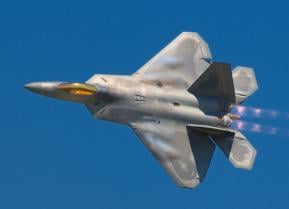The Chinese Navy's First Three Aircraft Carriers Will Stay Close to Home (For Now)
That's one conclusion of the U.S. Defense Intelligence Agency's January 2019 report on Beijing's military capabilities.
The Chinese navy's first three aircraft carriers will stick close to Chinese shores as they pursue a mostly defensive, regional mission.
That's one conclusion of the U.S. Defense Intelligence Agency's January 2019 report on Beijing's military capabilities.
The People's Liberation Army Navy commissioned its first aircraft carrier Liaoning, a refurbished former Ukrainian vessel, in September 2012. "China’s first aircraft carrier signaled a new age for PLAN aviation, which is now evolving from an almost exclusively land-based force to one with a sea-based component," the DIA explained in its report.
"China’s current aircraft carrier and planned follow-on carriers will extend air-defense umbrellas beyond the range of coastal systems and help enable task group operations in far seas," the DIA reported.
With the 999-feet-long Liaoning, China "join[ed] the small group of countries that have an aircraft carrier," according to the DIA. "Since that time, the PLAN has followed the long and difficult path of learning to operate fixed-wing aircraft from a carrier."
"The first launches and recoveries of J-15 fighter aircraft occurred in November 2012, with additional testing and training in early July 2013. With the first landing complete, China became only the fifth country in the world to have conventional takeoff and landing fighters aboard an aircraft carrier.
"In 2017, the Liaoning concluded its second deployment to the South China Sea for training—its first with embarked J-15 fighters—and conducted its first port visit to Hong Kong."
The J-15 is a clone of Russia's Su-33 naval fighter. Outwardly, the fighter has a lot in common with U.S., French and British carrier planes. "The J-15 has folding wings, strengthened landing gear, a tailhook under a shortened tail stinger, two-piece slotted flaps, canards and a retractable inflight-refueling probe on the left side of the nose."
But China's first flattop suffers serious limitations that reduce the J-15's effectiveness. "The Liaoning’s ski-jump configuration restricts aircraft takeoff weight, limiting maximum ordnance loads and overall combat power."
Moreover, the J-15 must operate with very little support from other aircraft types. "The ski-jump design also means [Liaoning] cannot operate large, specialized support aircraft, such as an [airborne early warning] aircraft."
To compensate for the lack of a large AEW plane, the PLAN acquired Z-18J and Ka-31 helicopters that carry air-surveillance radars. The helicopters "provide the PLAN a serviceable sea-based AEW capability to help fill that critical gap until newer catapult-equipped aircraft carriers capable of operating fixed-wing AEW aircraft enter service."
In 2017 China launched its second carrier Shandong. The vessel, which the DIA predicted could enter front-line service as early as 2019, is roughly similar to Liaoning and suffers the same limitations. "Like the Liaoning, the ship lacks catapult capabilities and has a smaller flight deck than U.S. carriers."
Future Chinese carriers could remedy Liaoning's and Shandong's defects, the DIA explained. "The PLAN [was] expected to begin construction in 2018 on its first catapult-capable carrier, which will enable additional fighter aircraft, fixed-wing early warning aircraft, and more rapid flight operations."
But don't expect any of China's first three flattops to venture too far from home. "The primary purpose of this first domestic aircraft carrier will be to serve a regional defense mission," the DIA claimed. "Beijing probably also will use the carrier to project power throughout the South China Sea and possibly into the Indian Ocean."
Aircraft carriers usually require extensive support from logistics vessels and escorting warships. While it slowly improves its carrier designs, the Chinese navy is also acquiring modern supply ships and cruisers to accompany the flattops. "The PLAN recently launched two new Fuyi-class fast combat support ships, intended to support aircraft carrier battle groups," the DIA reported.
The Chinese fleet is also building new Renhai-class cruisers that are similar in size and armament to the Ticonderoga-class cruisers that always escort the U.S. Navy's own 11 carriers.
"Once operational, the new Renhai class guided-missile cruiser, of which several are currently under construction, will be one of the most advanced and powerful ships in the world, boasting a large array of advanced-capability weapons and sensors developed domestically," according to the DIA.
It could be years or even decades before the PLAN is comfortable deploying carriers to the far ends of Earth. But the Chinese fleet is making progress toward that eventuality.
David Axe serves as the new Defense Editor of the National Interest. He is the author of the graphic novels War Fix, War Is Boring and Machete Squad.
Image: Reuters.


